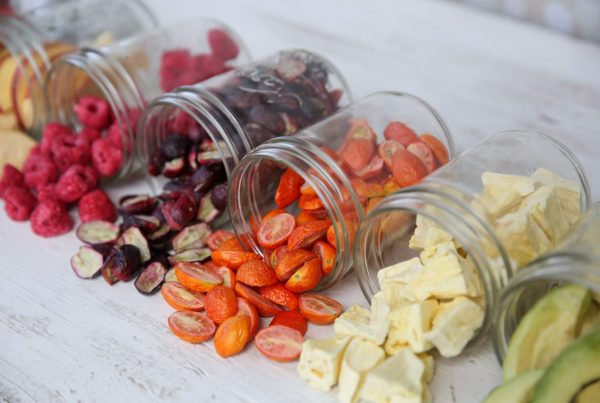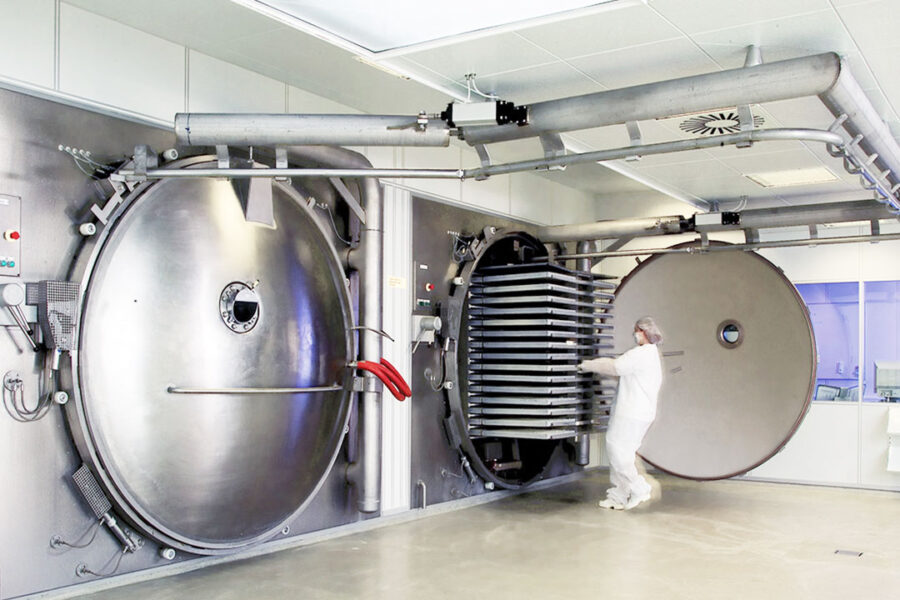Understanding the principles of freeze-drying
Freeze-drying, or lyophilisation, is a dehydration process that entails freezing the product and then reducing the surrounding pressure to allow the frozen water in the material to sublime directly from the solid phase to the gas phase. This method retains the product’s structure, nutrients, and flavour. It involves three main stages: freezing, primary drying (sublimation), and secondary drying (desorption). This long-established method ensures that the food retains its original qualities while enhancing its shelf stability.
Benefits of freeze-drying for food preservation
Freeze-drying offers significant benefits for food preservation. By removing moisture, the process prevents the growth of bacteria, yeast, and moulds, thereby extending the shelf life of food products. Additionally, it maintains the nutritional profile and taste of the food, providing a superior alternative to other dehydration methods. The lightweight and compact nature of freeze-dried products also make them convenient for storage and transport.
Challenges and limitations in food processing
Despite its advantages, freeze-drying comes with several challenges. The process is energy-intensive and time-consuming, leading to higher production costs. Additionally, not all foods are suitable for freeze-drying since some might lose their texture and stability through the process. The initial investment in freeze-drying technology is also substantial, which can be a barrier for small-scale producers.
Market analysis of freeze-dried foods in Australia
In Australia, the market for freeze-dried foods is gradually expanding. The increasing demand for long-lasting, nutritious, and convenient food options has spurred growth in this sector. Products such as freeze-dried fruits, vegetables, and ready-to-eat meals are gaining popularity among Australian consumers, driven by the health and wellness trend.
Nutritional value retention
One of the main benefits of freeze-drying is its ability to retain nutritional value more effectively than other preservation methods. Freeze-drying keeps most vitamins and minerals intact due to the low-temperature process, making these foods nutritional powerhouses compared to traditionally dehydrated counterparts.
Impact on ingredient quality
Freeze-drying positively impacts ingredient quality by maintaining the original taste, colour, and aroma of the food. This process prevents the chemical alterations that can occur with other preservation methods, ensuring the ingredient quality remains high and appealing to consumers.
Shelf life extension strategies
Freeze-drying significantly extends the shelf life of food products. By removing nearly all moisture, it creates an unfavourable environment for microbial growth. Additionally, effective packaging solutions, such as vacuum sealing and nitrogen flushing, enhance the shelf stability of freeze-dried foods.
Application in emergency food supplies
Freeze-dried foods are essential in emergency food supplies due to their long shelf life, nutritional retention, and ease of preparation. They are ideal for use in natural disasters, military rations, and space missions, where access to fresh food is limited.
Case studies of successful implementations
Several Australian companies have successfully implemented freeze-drying technology. For instance, local producers of freeze-dried fruits and vegetables have penetrated international markets, showcasing the potential for high-quality, export-oriented products. These case studies demonstrate the commercial viability and consumer acceptance of freeze-dried foods.
Regulatory considerations in the Australian market
The regulatory landscape in Australia ensures the safety and quality of freeze-dried foods. Food producers must adhere to strict guidelines set by Food Standards Australia New Zealand (FSANZ), which includes compliance with labelling, product testing, and hygienic processing standards. Navigating these regulations is essential for market entry and consumer trust.
Overall, the growth of freeze-drying in Australia represents a significant advancement in food preservation technology, promising extended shelf life, retention of nutritional value, and high-quality food products for consumers.
Overall, the growth of freeze-drying in Australia represents a significant advancement in food preservation technology, promising extended shelf life, retention of nutritional value, and high-quality food products for consumers.



